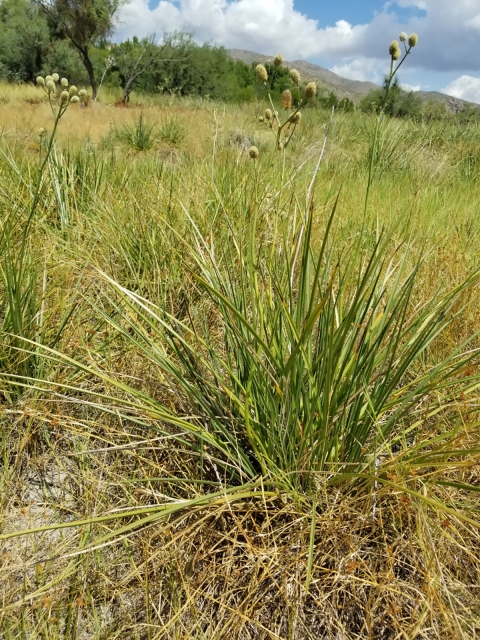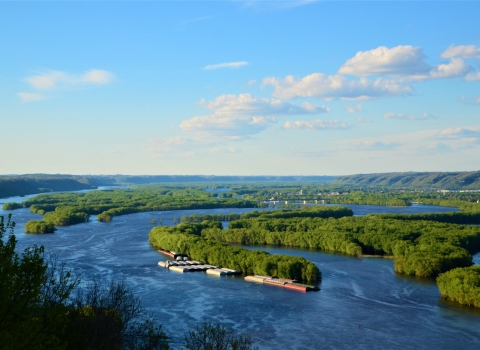The U.S. Fish and Wildlife Service is releasing the draft recovery plan for the endangered plant, Arizona eryngo, and seeking comments on the plan. The draft recovery plan establishes downlisting and delisting criteria for the Arizona eryngo. The 60-day public comment period will close on Oct. 15, 2024.
In 2022, the Arizona eryngo was federally listed as endangered under the Endangered Species Act with 12.7 acres of critical habitat designated on public and private lands in Pima and Cochise counties, Arizona. Once occurring in Arizona and New Mexico in the U.S. and Sonora and Chihuahua in Mexico, the species is now found only in isolated populations in Arizona and Mexico.
The Arizona eryngo is a long-living perennial in the carrot family. It has distinctive, cone-shape flowers that pollinators such as bees, beetles and butterflies frequent. The Arizona eryngo is a habitat specialist, growing only in ciénegas, a type of wetland in the desert that is fed by natural springs. Functional ciénegas were historically much more common, but activities like groundwater pumping and diversion led to water depletion of the ciénegas. The Arizona eryngo makes up part of the rare and diverse wetland ecosystem found in the arid Southwest.
“We are thankful to the many conservation partners in Arizona already helping with recovery efforts for the Arizona eryngo,” said Erin Fernandez, Fish and Wildlife Biologist with the Service’s Arizona Ecological Services Field Office. “These partners are extremely dedicated to conserving this species and have successfully grown the plant from seed and introduced several populations in Pima and Santa Cruz counties. Other conservation actions implemented by partners include monitoring the species and controlling woody vegetation encroaching on the species’ ciénega habitat.”
As presented in the draft recovery plan, the overall recovery goal is to ensure the long-term persistence of Arizona eryngo in the wild by increasing the number and sizes of its populations, conserving its habitat and reducing threats (such as drying of ciénegas due to groundwater pumping and water diversion and invading nonnative plant species) to the species. Draft recovery actions for the Arizona eryngo include introducing new populations, establishing ex-situ (off-site) plants, preserving seed collections, monitoring and studying the plant’s status and conservation needs, reducing threats to the species and its ciénega habitat and engaging with stakeholders for long-term conservation.
Recovery plans are not regulatory. Rather they provide both a framework for guiding a species’ recovery and the criteria we expect will indicate that federal protection is no longer necessary. Working with partners, including private landowners and land managers, the Service uses a range of conservation tools to recover threatened and endangered species to ensure that they can survive on their own in the wild.
An electronic copy of this draft recovery plan is available on the Service’s website: https://ecos.fws.gov/ecp/species/10705. The Service encourages the public, federal and state agencies, Tribes and other stakeholders to review the draft recovery plan and provide comments. The Service will consider comments received by Oct. 15, 2024.




